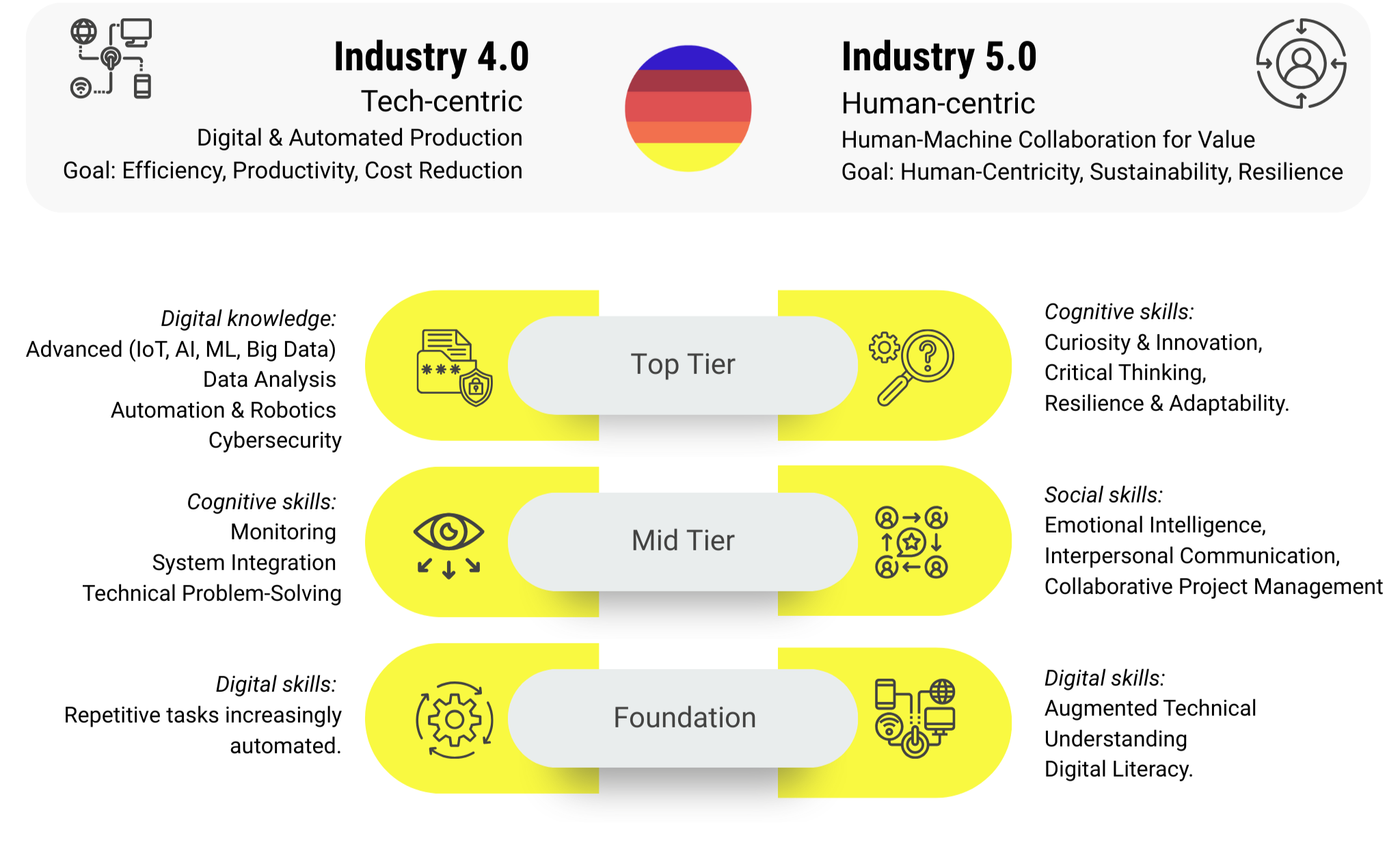Industry 5.0: The future of work
The age of workplace curiosity
Officially championed by the European Commission, Industry 5.0 is about bringing human intelligence and creativity back to the forefront, allowing people, AI and advanced technology to work together in collaborative harmony.
Beyond Efficiency: While Industry 4.0 focused heavily on 'how fast can we make it?', Industry 5.0 asks, 'how can we make it better for everyone and the planet?'
Human at the Core: Employee well-being isn't an afterthought; it's central to all processes. It's about creating meaningful, empowering work environments.
Green & Resilient: This isn't just about profit; it's about pioneering circular production models and building industries tough enough to withstand global shocks – like pandemics.
Value-Driven, Not Just Tech-Driven: We're shifting from a "tech for tech's sake" mindset to one where technology serves higher social and environmental goals.
Industry 5.0 is arguably the most profound transformation to the workplace in industrial history. Beyond mere technological advancement, this era signals the dawn of the age of workplace curiosity, fundamentally reshaping the future of work. At its core, Industry 5.0 is human-centric, placing individual well-being, unique human skills and creativity at the heart of operations, fostering a collaborative symphony between people and smart technologies. It's an evolution that champions sustainability and resilience, ensuring that progress serves humanity and the planet first.
The evolution of industryThe future of work requires a new focus on developing cognitive & social skills
Industry 5.0's human-centric approach emphasises collaboration, sustainability, and resilience. This evolution redefines the most critical skills and creates a significant shift in the hierarchy of skills. The need for enhanced cognitive skills puts curiosity and critical thinking firmly at the top of top tier skills.
Future of leadership
Industry evolution inherently requires a shift in leadership approach and Industry 5.0 marks the end of ‘command and control’ leadership. Servant leadership and inclusive leadership have made some progress towards human-centric leadership, but the future of work will need leaders whose main focus is hyper-personalisation. This means constantly adapting to the needs of individuals in teams to ensure wellbeing is protected and diverse talent is maximised
The evolution of leadership







